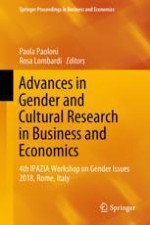
2019 | OriginalPaper | Buchkapitel
1. The Exiled Queen Maria Casimira Sobieska in Rome: Gender, Culture and Politics
verfasst von : Giulia Vincenti
Erschienen in: Advances in Gender and Cultural Research in Business and Economics
Aktivieren Sie unsere intelligente Suche, um passende Fachinhalte oder Patente zu finden.
Wählen Sie Textabschnitte aus um mit Künstlicher Intelligenz passenden Patente zu finden. powered by
Markieren Sie Textabschnitte, um KI-gestützt weitere passende Inhalte zu finden. powered by